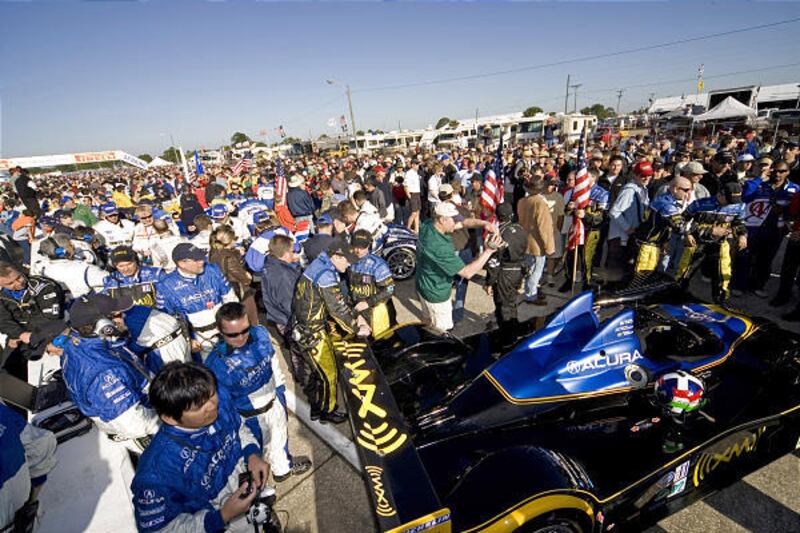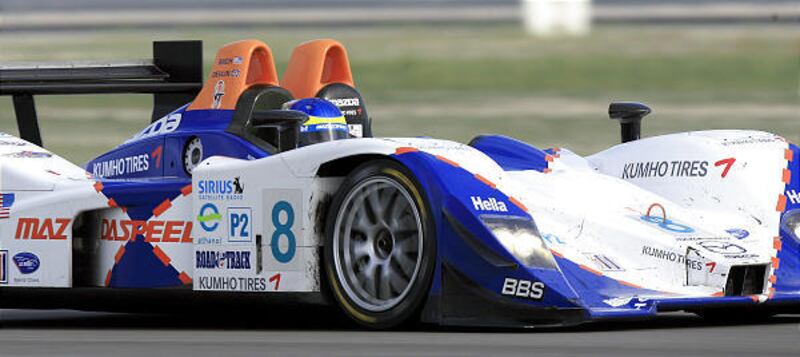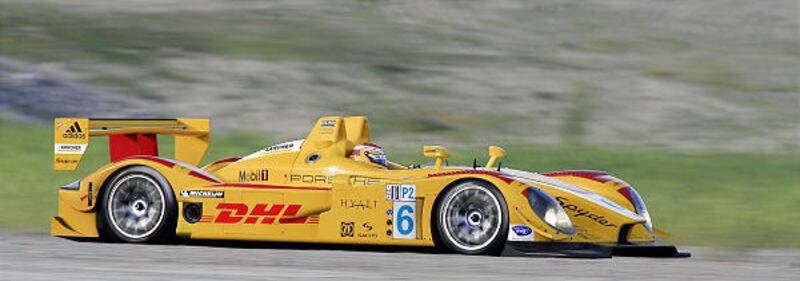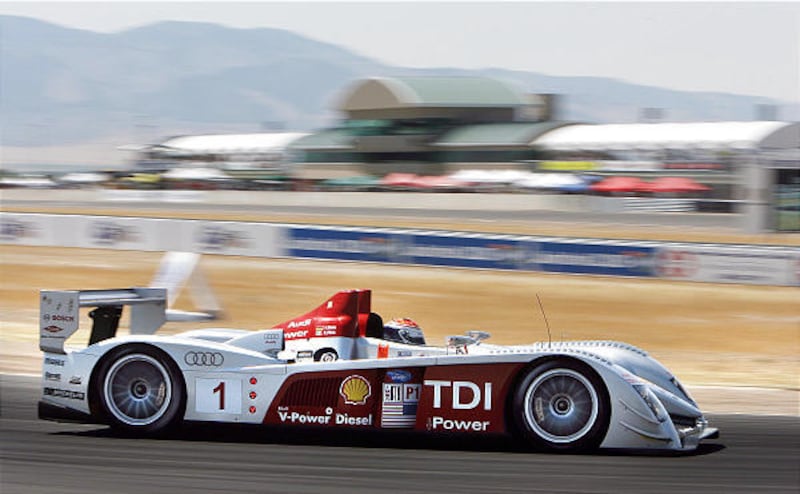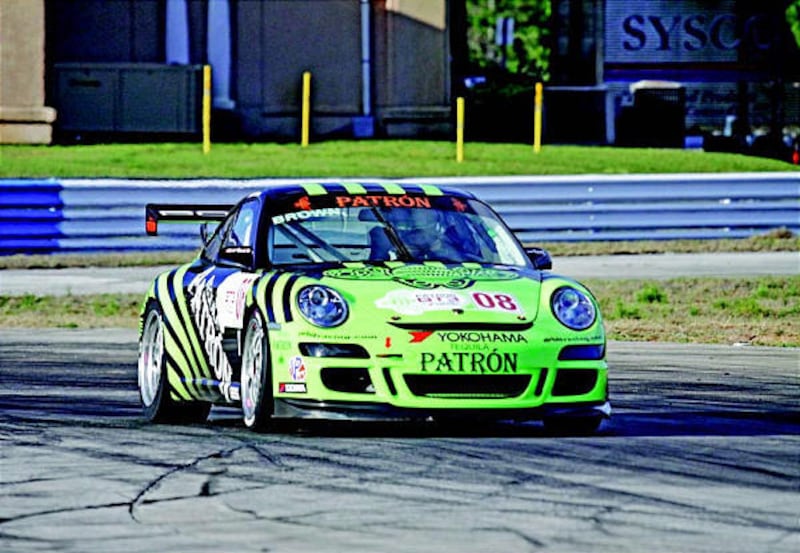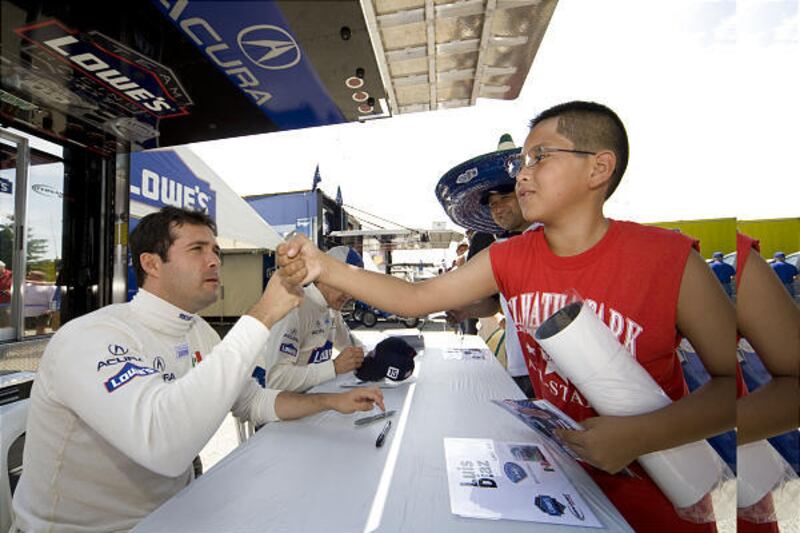TOOELE — When David Brabham participated in his first American Le Mans Series race at Miller Motorsports Park, he felt a lot like a backpacker who realized he forgot to pack a compass after getting lost on a wilderness trail.
"When we first went there, we ran the long course and it was pretty difficult to remember where the hell you were going," Brabham said. "There were so many corners. You've got very little outside reference points. It's quite flat. There's no trees. There's no barriers in effect. It's out in the desert."
But it is the challenging nature of the course and the race itself that keeps drawing competitors like Brabham back for more.
Now entering its fourth year, the Utah Grand Prix has carved out a distinctive niche on the American Le Mans Series circuit. Top drivers in the series love how the track challenges the mettle of even the most prepared teams.
In addition to the plethora of turns, Miller Motorsports Park features the longest and fastest straightaway of any course used by the series. The straightaway extends out for 3,200 feet and cars can approach speeds of nearly 200 mph on it.
"What sets this track apart is that it is so quick and so challenging to the driver and to the race car setup," said Patrick Long, who will compete in the GT2 class at this year's Utah Grand Prix. "The corners are fast and flowing, and the weather is hot. There's elements of wind and the sun that change the racetrack so quickly that you really must be dialed in with your setup."
Park officials have actually toned down the degree of difficulty that the race presented in its inaugural year. Back then, drivers navigated a course that went 4.6 miles and included 24 turns. Now, the course goes 3.048 miles and features just 15 turns.
Shortening the course has made a difference in speeding up the race and injecting a little more excitement into the mix for spectators.
"It's better for the fans," Brabham said. "It took so long to do a lap, they all fell asleep. This way, the cars are coming past more frequently."
From the drivers' perspective, another change that has made a difference is the timing of the race itself on the series circuit.
When the Utah Grand Prix first debuted in 2006, the race was held in mid-June — a time of year where the desert heat placed a bigger factor into both the atmosphere and outcome of the race. Since that time, Miller Motorsports Park has staged the race in mid-May.
It is perfect timing, Long said, because the Utah Grand Prix is the first road-course race after consecutive street-course races in St. Petersburg, Fla., and Long Beach, Calif. It offers drivers a perfect transition to the road courses that dominate the remaining rounds of the yearly circuit.
The Utah Grand Prix is also a timed race lasting approximately two hours and 45 minutes. Whoever is winning when that time window closes becomes the winner. Because there is a fixed time to the race, when to make a pit stop and when to refuel takes on an even bigger role in a team's race plan.
When a driver chooses to refuel can make a major difference in the outcome.
"Certainly, you want to have fresh tires, too," Long said. "So the later you can stop for that last tank, the fresher your tires will be to the end of the race. There's a lot of variables. But, as a driver, you go over those things before the race so you have an idea of what could happen."
Like all American Le Mans races, the Utah Grand Prix features four different classes of cars competing on the track at the same time. The peculiar setup draws its inspiration on the world-famous 24 Hours of Le Mans race in Europe that serves as the model for the American series.
There are differences in the class. There are typically two GT classes — GT1 and GT2 — and a pair of prototype classes — LMP1 and LMP2. Winners are crowned in each class along with an overall winner.
Differences between the classes range from subtle to significant. With the two prototype classes, for example, there are basic differences in weight and power. An engine in an LMP1 car is designed to function with greater horsepower than an LMP2 car. The LMP2 car is also heavier than the LMP1 car.
All of it translates to a gap of at least a second or two in lap time between the two classes in a typical race.
Another feature unique to the American Le Mans Series is that each car utilizes two drivers who switch during the course of the race. A good driving tandem is as important as anything else, since drivers who work well together can generate tons of success in short amounts of time.
Long can attest to that. He teamed with his current racing partner Joerg Bergmeister in 2005 and 2006. Both years, the duo captured the GT2 championship at season's end.
This season, they have won two straight races — Long Beach and St. Petersburg — coming into the next leg of the series at Miller Motorsports Park.
"Joerg and I have a continuity and a bond that works well," Long said. "What's so particular is we've grown to really tune a car to both of our likings, and we've adapted our driving styles so we're working to one common goal."
Brabham has a history of success as well, but he will be seeking some redemption when he comes to Utah. A malfunctioning gearbox cost him in his first race in the Beehive State, and an early accident wiped out his chances in his second appearance at the Utah Grand Prix.
This time, victory or bust is his mantra.
"Every race, we're there to win. It's that simple," Brabham said. "We'd be disappointed if we came away finishing second."
Larry H. Miller Dealerships Utah Grand Prix
2009 American Le Mans Series —
Round Four
When: May 15-17, 2009
Where: Miller Motorsports Park
Qualifying: Saturday, May 16 for all classes, 3:20 p.m.
Main event: Sunday, May 17, 2:15 p.m.
Television: SPEED (same-day tape) beginning at 8 p.m. on May 17.
Radio: XM channel 242, Sirius channel 126, 105.3 FM
Internet: americanlemans.com
E-MAIL: jcoon@desnews.com

